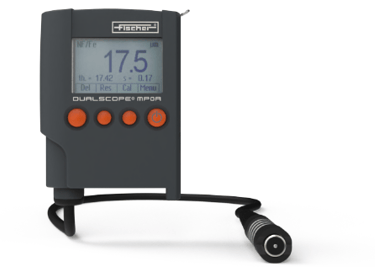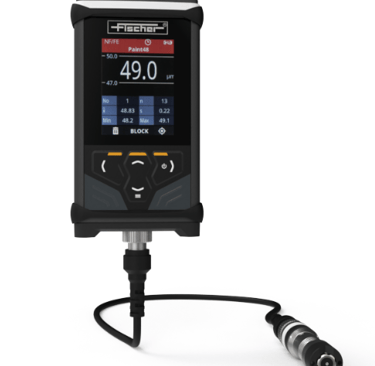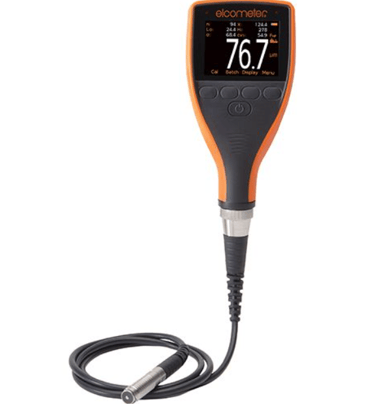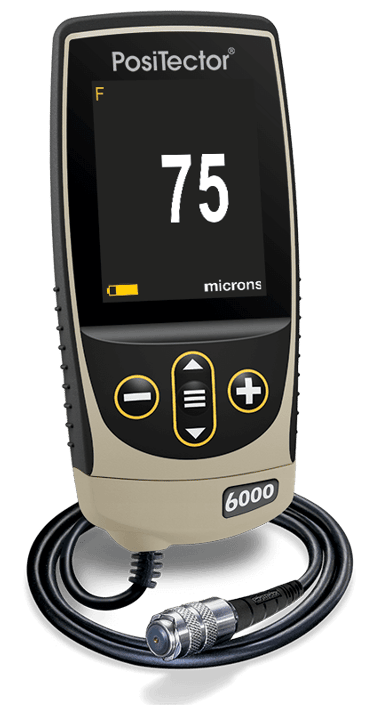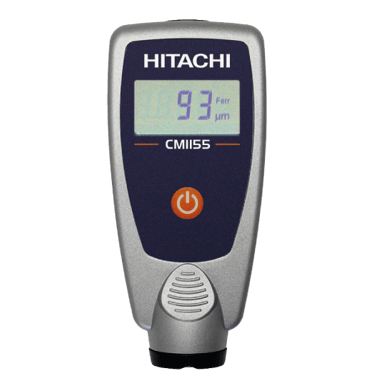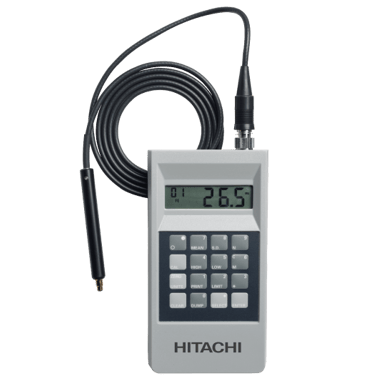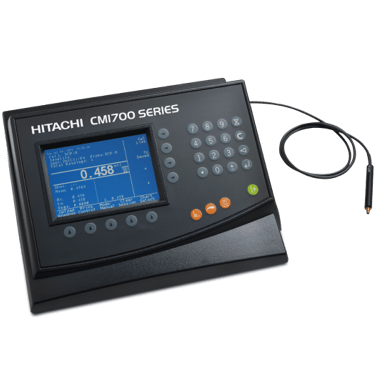
Magnetic induction measuring method
/
/
/
The prerequisite for this is a magnetic base material and a non-magnetic coating.
This is how Magnetic Induction measuring works.
Probes for magnetic induction measuring consist of an iron core around which an exciter coil is wound. A low-frequency alternating current (typically in the Hz range) flows through this coil. This creates an alternating magnetic field around the poles of the iron core.
When the pole of the probe approaches a magnetized object, for example a piece of iron, the iron amplifies the alternating magnetic field. A measuring coil registers this amplification as voltage. How high the voltage difference is depends on the distance between the pole and the iron part. For coated parts, this distance corresponds exactly to the coating thickness.
Where is this process used?
The Magnetic Induction Method is widely used in several industries for non-destructive coating thickness measurement on ferrous metal substrates. Here are key areas where this process is commonly applied.
Non-magnetic coating material on magnetic base material
Electroplated layers of chromium, zinc, copper or aluminum on steel and iron
Paint, enamel, lacquer or plastic coatings on steel and iron
This method is crucial in any industry where ensuring the correct thickness of a coating on a metal surface is important for protection, functionality, and meeting regulatory standards
Applicable Standards
DIN EN ISO 2178


Available Manufactures and Solutions
Model- MPO
Model- MMS Inspection
Model- FMP
Model- DMP
HELMUT FISCHER
DEFELSKO
Model- ELCOMETER 456
ELCOMETER
Model- POSITECTOR 6000
HITACHI HI-TECH ANALYTICAL SCIENCES
Model- CMI150 & 250
ELECTROPHYSIC
Model -Minitest
Model -Quintsonic
Model -Smartest
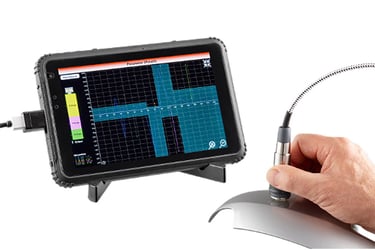



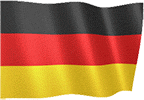








Model- CMI730
Model- CMI233 & 243


Innovation House
Mon-Sat 9am-7pm

contact@nextagen.in

+91 2654059388
© 2024 Nextagen Analytics Private Limited . All Rights Reserved.
